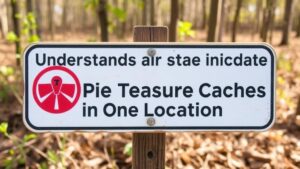Techniques for Recovering Antique Ink Bottles in Historic Offices
Techniques for Recovering Antique Ink Bottles in Historic Offices
Antique ink bottles are valuable artifacts that provide insights into historical writing practices and material culture. As collectors and historians become increasingly interested in these unique items, the recovery of antique ink bottles from historic offices has gained prominence. This article explores effective techniques for recovering these artifacts while ensuring the preservation of their integrity and the historical context in which they are found.
Understanding the Historical Context
Before embarking on the recovery of antique ink bottles, it is crucial to understand their historical context. Ink bottles date back to various periods, with significant types produced in the 19th and early 20th centuries serving as the primary focus for collectors. Knowing the specific characteristics of the bottles, such as material composition and design styles, can aid in identifying their origins and significance.
For example, the blue-glass ink bottles typically manufactured between 1820 and 1850 are notably different from those made in the early 1900s, which often incorporated more sophisticated manufacturing techniques. This knowledge not only assists in identifying the age of the bottle but also informs the recovery and preservation methods to be employed.
Locating Historic Offices
The first step in recovering antique ink bottles is locating historic offices or properties that may contain them. e properties can often be identified through local archives, historical societies, and urban development plans. Once a site is selected, it is essential to conduct thorough research to ascertain the buildings past uses and the likelihood of finding ink bottles.
For example, properties that served as legal offices, publishing houses, or educational institutions from the late 1800s to mid-1900s may yield a higher density of ink bottle recovery opportunities. A case study involving the restoration of a 1920s schoolhouse in Pennsylvania revealed numerous ink bottles as part of the excavation of proprietary material left behind by former occupants.
Excavation Techniques
When it comes to the physical recovery of antique ink bottles, employing proper excavation techniques is paramount. This process involves several key steps:
- Site Assessment: Conduct an initial assessment to identify areas of high potential for discoveries, considering previous usage patterns of the property.
- Stratigraphic Excavation: Use stratigraphic excavation methods to carefully remove layers of soil, maintaining records of each layer. This helps preserve contextual information important to the study of the artifacts.
- Hand Tools: Use hand tools such as trowels, brushes, and dental tools to remove dirt surrounding the bottles without causing damage.
For example, a team excavating a 19th-century office in Massachusetts utilized these techniques and successfully recovered several intact ink bottles, corroborating the sites use as a penmanship school.
Documenting Finds
Proper documentation is essential in the recovery process. Each discovered ink bottle should be recorded with detailed descriptions, including dimensions, color, material, and any markings or inscriptions. Photographic documentation is also crucial, as it provides visual evidence of the artifacts condition at the time of recovery.
An effective way to document finds is by employing a standardized recording sheet, which an excavator can fill out during the process. This can include:
- Artifact number
- Excavation context
- Photographic reference
- Description of condition and markings
All documentation should be stored alongside the physical artifacts for future reference and to support research inquiries.
Preservation Techniques
Once the ink bottles are recovered and documented, appropriate preservation techniques must be employed. This process involves cleaning, stabilizing, and displaying the artifacts. Each step requires a careful approach due to the age and potential fragility of the bottles.
Cleaning of the bottles should be done using distilled water and soft brushes, avoiding harsh chemicals that could damage the glass or any remaining ink residues. For stabilization, it is often recommended to store the bottles in a climate-controlled environment, as fluctuations in temperature and humidity can lead to deterioration.
Real-World Applications and Ethical Considerations
The recovery and preservation of antique ink bottles are not solely academic pursuits; they have real-world applications in museums, educational institutions, and private collections. For example, museums often incorporate recovered ink bottles into their exhibits to enrich narratives around historical writing practices, drawing visitors’ attention to the evolution of communication over time.
Ethical considerations also play a significant role in the recovery of artifacts. It is vital to obtain the necessary permissions from property owners and comply with local regulations regarding historical artifacts to ensure a lawful and respectful recovery process. Engaging with local heritage organizations can provide guidance on ethical standards and protocols.
Conclusion
Recovering antique ink bottles from historic offices is a multifaceted process involving research, excavation, documentation, and preservation. By adhering to best practices, participants in this endeavor can enhance our understanding of historical writing tools while ensuring the artifacts are preserved for future generations. Collectors, historians, and researchers alike stand to benefit from the careful application of these techniques, ultimately fostering a deeper appreciation for the material culture of writing.
In summary, the recovery of antique ink bottles is valuable for preserving history and requires a thoughtful, systematic approach characterized by attention to detail and an awareness of ethical considerations.



